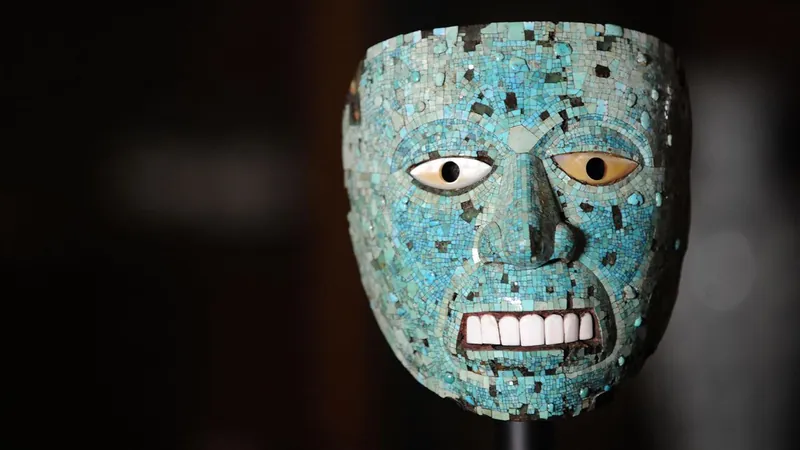
Mask of Xiuhtecuhtli: The 600-Year-Old Treasure of the Aztec Fire God Taken by Conquistadors!
2024-11-25
Author: Nur
Unveiling History: A breathtaking turquoise-encrusted wooden mask originating from the heart of the Aztec civilization has captured the attention of historians and art enthusiasts alike.
From Where?
The mysterious origins of this artifact trace back to Mesoamerica, a region rich in ancient cultures and untold stories.
When Was It Created?
Crafted between 1400 and 1521, this exquisite piece of art bears witness to the complex spirituality and artistry of the Aztecs.
What Does It Reveal About Our Past?
Currently showcased at the renowned British Museum in London, the Mask of Xiuhtecuhtli is no ordinary artifact. It is believed to have been seized by the infamous Spanish conquistador Hernán Cortés during his brutal conquest of the Aztec Empire in the early 16th century. This mask is one of several illustrious turquoise items that were transported back to Spain as prized possessions.
Manufactured from Spanish cedar, this mask is not only striking in appearance but also intricately designed. It features a stunning mosaic of turquoise, gleaming mother-of-pearl eyes encircled in gold, and menacing conch shell teeth. Adding to its mystique, the interior is coated with cinnabar, a striking red mineral that historically held significance due to its mercury content. Measuring approximately 6.6 inches (16.8 centimeters) in height, the mask possesses small holes at the temples, indicating its former use as a wearable item or an attachment to a ceremonial object.
The mask represents Xiuhtecuhtli, the Aztec god of fire, whose name translates to "turquoise lord" in the Nahuatl language. Revered by the Aztecs, Xiuhtecuhtli was the figure behind the “new fire” ritual, which was integral to their cosmology and societal structure.
Every 52 years, Aztec priests extinguished the sacred flame in the Fire Temple at Tenochtitlan, marking a significant moment in their calendrical system. During this pivotal event, the high priest donned the turquoise mask and enacted the Xiuhtlalpilli, or "new fire ceremony." This dramatic ritual entailed the chilling task of starting a fire on the chest of a sacrificial victim, a practice believed to renew the universe for another cycle of 52 years. Notably, the darker turquoise fragments on the mask's cheeks and nose are thoughtfully arranged to resemble a butterfly, a powerful symbol of rebirth that resonates with the themes of renewal and regeneration associated with Xiuhtecuhtli.
This mesmerizing artifact not only encapsulates the intricate beliefs and practices of the Aztecs but also stands as a stark reminder of the tumultuous encounters between ancient civilizations and European conquerors. Discovering the stories behind such treasures allows us a glimpse into the sacred rituals of a lost world and sparks a critical conversation about the cultural heritage that continues to shape our understanding of history today!


 Brasil (PT)
Brasil (PT)
 Canada (EN)
Canada (EN)
 Chile (ES)
Chile (ES)
 España (ES)
España (ES)
 France (FR)
France (FR)
 Hong Kong (EN)
Hong Kong (EN)
 Italia (IT)
Italia (IT)
 日本 (JA)
日本 (JA)
 Magyarország (HU)
Magyarország (HU)
 Norge (NO)
Norge (NO)
 Polska (PL)
Polska (PL)
 Schweiz (DE)
Schweiz (DE)
 Singapore (EN)
Singapore (EN)
 Sverige (SV)
Sverige (SV)
 Suomi (FI)
Suomi (FI)
 Türkiye (TR)
Türkiye (TR)